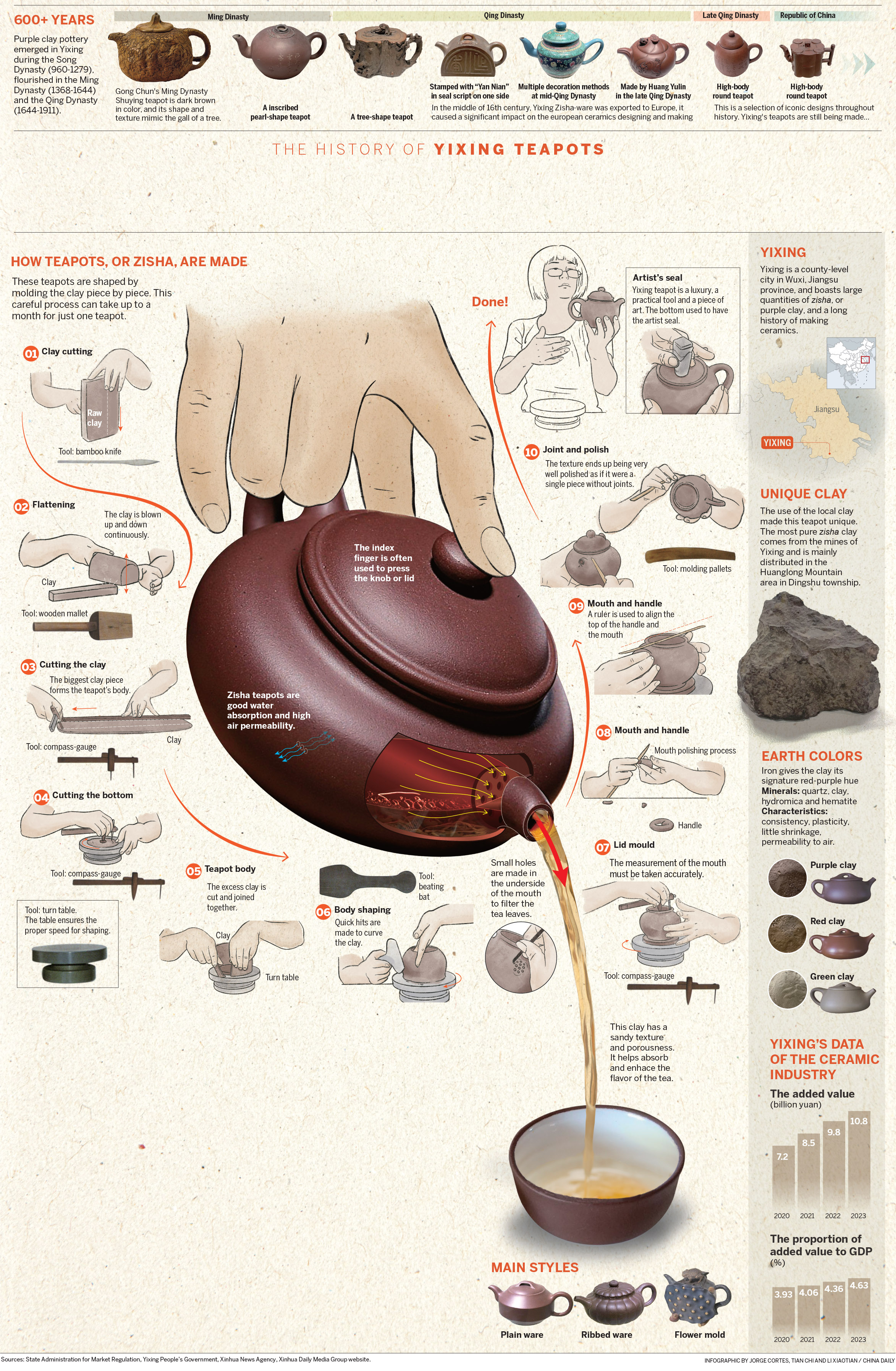Yixing, Jiangsu province, is renowned as one of world's top producers of ceramics

Editor's Note: Using a blend of words and visuals, this series explores unique communities and reveals the heart of China through food, architecture, craftsmanship, landscapes and traditions.
Hurun Global Ceramics listed its Top Ten Artistic Ceramic Cities Worldwide for 2023 during a recent ceremony in Shanghai. Among those honored was Yixing, Jiangsu province. Steeped in history, the city is one of China's oldest centers of ceramic craftsmanship, with a legacy of more than 7,000 years of pottery art.
After being extracted from the earth, raw purple clay is left exposed to the elements for many years, undergoing weathering from wind, rain and snow before it can be processed into ceramic beauty.
In Yixing, purple clay was used initially to produce large vessels such as tanks, jars and bottles. As tea culture gained popularity, purple clay teapots and cups emerged during the Ming Dynasty (1368-1644) and gradually became prevalent. These were often exported along with the tea.
READ MORE: Traditional culture given a modern twist
Some products were modified from traditional shapes, while others featured intricate decorations created using complex techniques. Today, with the continuous expansion of Chinese cultural influence and export networks, purple clay tea ware has garnered a multitude of enthusiasts around the world. Purple clay is not always purple, but comes in various colors and forms. The firing temperature and crafting process influence the final product's hue.
The processed purple clay near Yixing's Dingshu township is particularly well-suited for creating ceramic products and has earned widespread renown. In many homes in Xiwang village, the clay is deftly kneaded by hand and shaped into exquisite pottery. As one wanders through the quaint lanes of the village, the eye is met with a multitude of purple clay studios.
From a bygone era of poverty to its current status as a village supported by a prosperous industry, a succession of endeavors has given Fan Zefeng, the Party chief of Xiwang, a belief in the potency of the purple clay industry as the catalyst of a rural renaissance. Xiwang has established some 680 individual studios, five industrial bases and 26 artistic teams. The number of local artisans holding professional and technical titles has grown from fewer than 40 to more than 400.
ALSO READ: Mastering an ancient art
In the past, operations were often fragmented, resulting in problems with product quality, innovation and market outreach. These challenges were addressed with the establishment of the country's first cooperative society focusing on handmade purple clay ceramics, which significantly improved the raw material supply, technical training and brand packaging.
Ji Yishun, a renowned Chinese master of ceramic art, said that Yixing purple clay has reached its zenith in modern times and is beloved for its breathable and impermeable qualities, allowing it to preserve the flavor of tea for extended periods.
Guo Jun contributed to this story.


